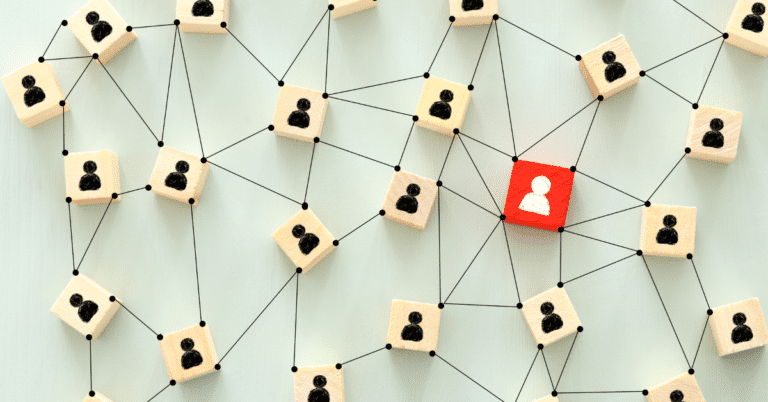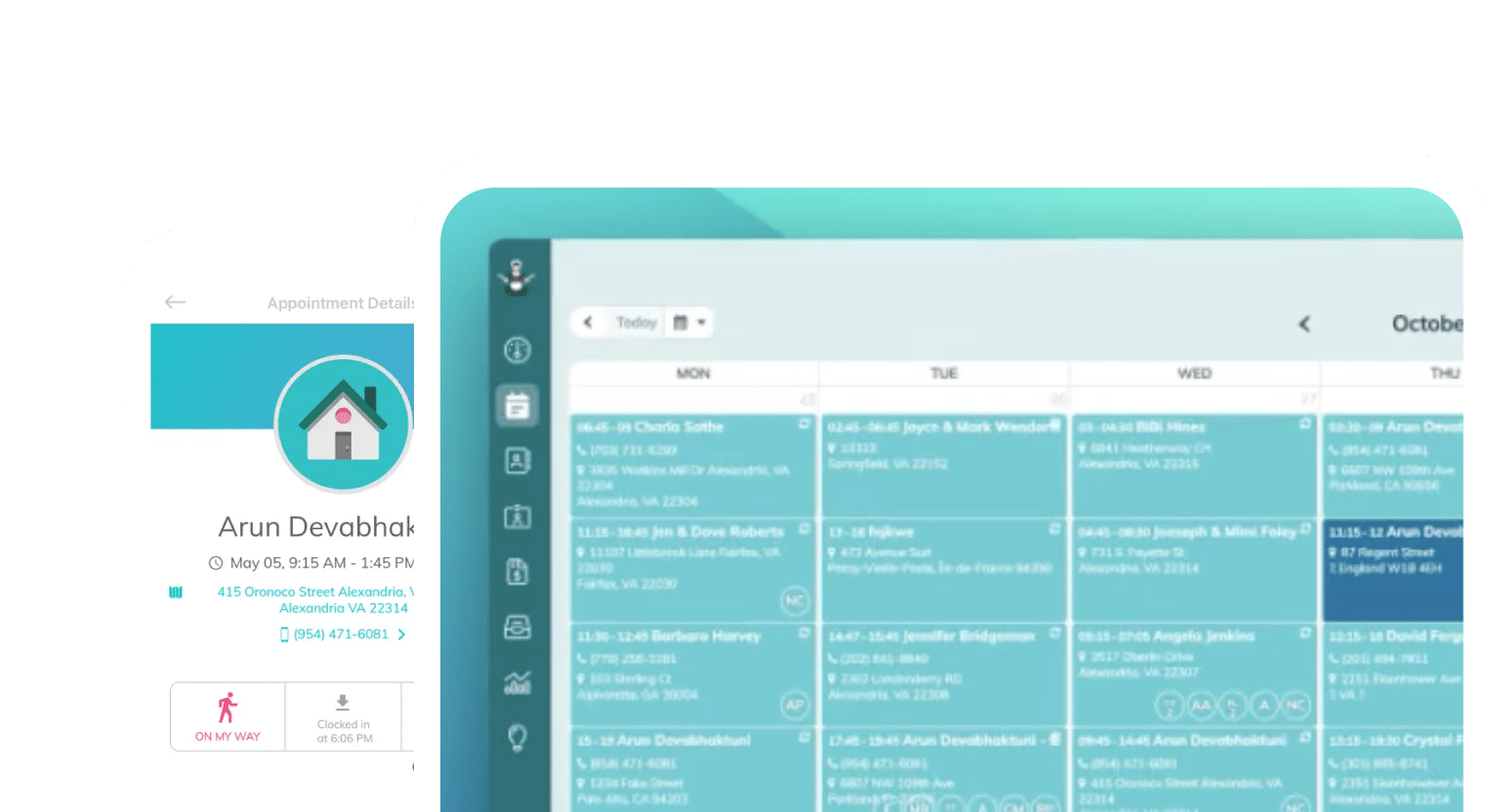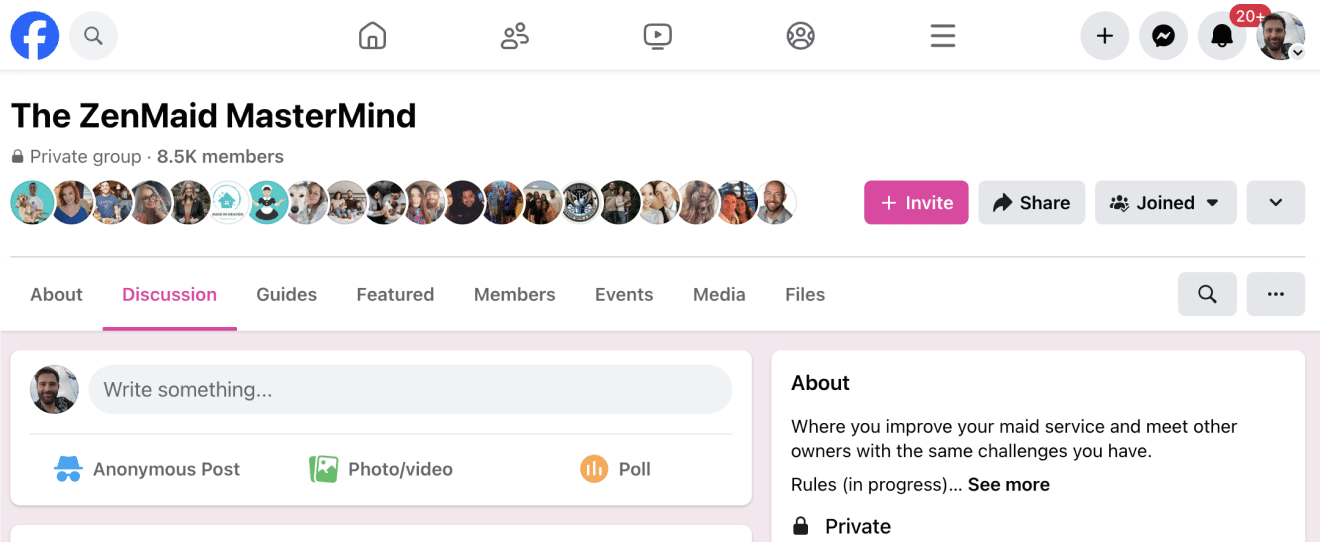ZenMaid is the simple scheduling software that will help you save 30+ hours in your cleaning business, every week. Join thousands of other cleaning business owners who now have time to take a nap, spend time with their families, and take vacations! Start your free 14-day trial today to discover how many hours you can get back in your week.
Let’s be real for a second: hiring the right people for your maid service can be a headache. Between sifting through endless applications, setting up interviews, and vetting potential candidates, it can take hours, if not days, of your precious time. Enter AI, the game-changer you didn’t know you needed.
So, how can you harness the power of AI for recruiting in your cleaning business? This subject was recently tackled by recruitment specialist Libby DeLucien. In this article, we’ll break down a practical roadmap for integrating AI into your hiring process.
Table of contents
Why Use AI for Recruiting in Your Maid Service?
Before we dive into the how-tos, let’s look at why you should even consider using AI in your recruiting process. AI can help you streamline several aspects:
Efficiency: You can dramatically cut down on the hours spent screening applications.
Accuracy: AI can better match candidates with your company’s specific needs.
Consistency: Minimize human error and the potential for bias in your hiring.

The 5 Core Competencies of Recruiting with AI
1. Job Descriptions & Role Clarity
Your job description isn’t just a list of duties; it’s your first marketing tool to attract the right candidates. According to Libby, you have to nail this down to a ‘T’ to make AI work for you. Why? Because AI uses this info to find candidates who genuinely match what you’re looking for. No more sifting through stacks of resumes; with a detailed job description, AI can zero in on the most fitting candidates like a bloodhound on a scent.
2. Sourcing Candidates
Think of AI as your personal matchmaker for employment. Libby emphasizes that AI isn’t about replacing your judgment; it’s about making it better. How? By using data analytics, AI can source candidates from a broader pool — way broader than you’d ever have time to search through. Imagine being able to reach out to candidates who have the skills and are likely interested in what you’ve got to offer. That’s like fishing in a pond where you know the fish are biting.
3. Screening & Assessments
After AI brings you a collection of promising candidates, it doesn’t clock out. Nope, it’s still on the job, helping you with the initial screening and assessments.
According to Libby, you can set up chatbots to conduct the first round of interviews or automated questionnaires to do initial screenings. And the best part? AI can analyze hundreds of resumes against your job’s benchmark requirements, narrowing the field and doing the heavy lifting so you don’t have to.
4. The Interview Process
Hold onto your hats, because we’re about to kick it up another notch. Not only can AI schedule interviews and send reminders to candidates, but it can even help you during the actual interviews. Libby suggests that AI tools can evaluate video interviews, scanning for non-verbal cues to offer insights that can easily be overlooked. So, yes, the robot can pick up on if the candidate was genuinely enthusiastic or just blowing smoke.
5. Onboarding & Retention
Finally, the endgame — hiring isn’t the end, it’s just the beginning. Libby insists that AI helps you not just in bringing the right talent aboard, but also in keeping them. From sending automated onboarding documents to tracking performance metrics, AI ensures that you’re not only hiring effectively but also keeping those valuable team members for the long haul.
Key Technologies to Consider
Natural Language Processing (NLP)
One of the AI tools you can use is Natural Language Processing, which scans resumes for keywords related to the job description. But it’s not just about matching words; it’s about understanding the context. So, if you’re looking for someone with “excellent customer service skills,” NLP can filter out candidates who only worked in back-office roles, even if they list customer service on their resume.
Machine Learning Algorithms
Machine Learning can predict which candidates are most likely to succeed based on previous hires. Have past employees with specific qualifications or experience worked out exceptionally well? The machine will notice the pattern.
Automated Chatbots
Use chatbots for initial screening rounds. These bots can ask basic questions to filter candidates before you even spend a minute with them. This frees up your time to focus on the most promising candidates.

Steps to Integrate AI into Your Recruiting Process
Step 1: Know What You’re Looking For
You’ve got to know what you’re looking for to teach the AI what to find. List out the skills, experience, and qualities that are non-negotiables for your hires.
Step 2: Choose the Right AI Tools
Based on your needs, pick the AI technologies that would serve you best. There’s no one-size-fits-all solution here. Your choices should align with the problems you’re trying to solve.
Step 3: Train the AI
No, you don’t need a degree in computer science for this. Most AI tools designed for recruiting come with intuitive interfaces and guides. Import past resumes and current employees’ records to help the AI learn what a successful hire looks like for your company.
Step 4: Test and Tweak
Before you let AI take the wheel, do a test run. Use it for a minor recruiting drive and pay close attention to its choices. Is it missing out on good candidates? Is it suggesting folks who are clearly not a fit? Tweak the parameters accordingly.
Step 5: Go Live
Once you’re satisfied, let the AI do its thing. But remember, AI is a tool, not a replacement for human judgment. Always do a final manual review to ensure the candidates are the right fit for your company’s culture and specific needs.
Step 6: Keep Updating
AI learns over time. Regularly update the tool with new data to make even more accurate selections in the future.

Pitfalls to Avoid
- Over-reliance: Don’t let AI completely replace human interaction. At some point, you’ll need to meet or at least speak with your potential hires to get a feel for their soft skills and cultural fit.
- Bias: Ensure your AI tool is set up to minimize bias. If you’re not careful, it can perpetuate existing prejudices in your recruiting process.
- Legal Concerns: Make sure your use of AI complies with hiring laws and regulations. It’s always a good idea to consult with a legal advisor experienced in employment law and technology.
Wrapping Up
So there you have it! AI is a practical tool that can significantly improve your recruitment process today. And if you’re thinking, “This sounds too techy for me,” don’t worry. Most of the tools out there are user-friendly and come with great customer support. Ready to dive in? Your perfect hire might just be an algorithm away.
If you found this article helpful for your maid service, you may also like:
- Filthy Rich Cleaners Podcast E28: How Much Does a 7-Figure Business Owner Take Home? + More Juicy Q&A’s
- Filthy Rich Cleaners Podcast E27: The Lead-Converting Marketing Secrets Most Cleaning Businesses Get Wrong
- Filthy Rich Cleaners Podcast E26: The Client Retention Strategy Your Competitors Don’t Want You to Know
- Filthy Rich Cleaners Podcast E25: How Kate Croukamp Built a 7-Figure Product Line in Her Cleaning Business
- How to Transition from Paper Scheduling to Software in Your Cleaning Business (Without Losing Clients or Your Mind)
This article is based on a presentation by Libby DeLucien.
This talk first aired at the 2023 Maid Service Success Summit. The Maid Summit is an annual online event that brings together the most successful leaders in the cleaning industry, like Debbie Sardone, Angela Brown, Courtney Wisely, Amy Caris, Chris Schwab and more. Get free access to masterclasses and workshops to help you grow, scale, and automate your cleaning business to get more leads and profit. Make sure you’re on our email list to find out how to get free tickets to the next event.

 Frustrated with your scheduling? Try the easiest-to-use calendar app, made by and for maid service owners.
Frustrated with your scheduling? Try the easiest-to-use calendar app, made by and for maid service owners.









